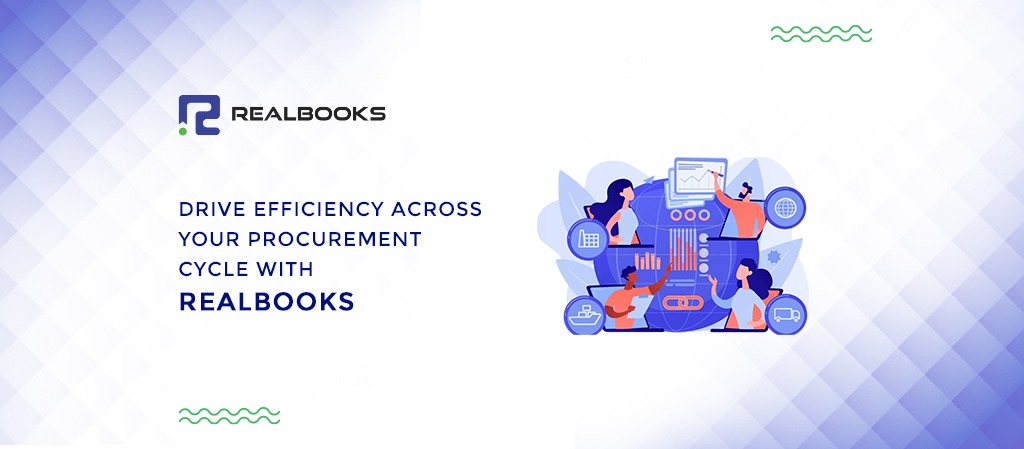Procurement is at the heart of your business activities. How much your business spends and how often it does that is one of the essential key performance indicators as it reflects the productivity and efficiency of your day-to-day operations.
The activities related to procurement involve a certain set of steps that happen every cycle. It’s called an order-to-pay(O2P) or a purchase cycle. Your procurement cycle includes all those activities that help to order, procure, and pay for materials that your business needs.
How does it work?
The purchase or the O2P cycle starts with identifying the needs. Where a specific department or godown needs goods or materials is identified. A reasonable specification about required goods and materials is made which is your purchase requisition. The requisition is sent to the purchasing department for approval.
The purchase department then reviews the requisition against the budget and if everything seems good to go, is validated. The purchase orders are then sent to vendors for further negotiation.
A purchase order is the first commercial offer made between a buyer and a seller that documents the quantity of materials needed, agreed upon prices, delivery place, and date along with specific terms and conditions. Once the vendor approves the purchase order, it becomes a legally binding contract.
After this, the vendor delivers the materials ordered on the specified date and the destined department or godown. A thorough inspection is done against the contract terms in the purchase order and if everything checks out, the goods receipt is approved.
The bill or the vendor invoice of the purchase goes to the accounting department. The accounting department then compares and evaluates the purchase order, the vendor invoice, and the goods receipt for discrepancies. If there are no errors, then the vendor invoice is approved and a payment is made.
What are the challenges that you might face?
For a business, the whole purchase cycle may span for a number of days, given the above number of steps. It might take even longer when the business relies majorly on manual processes. Many businesses, especially MSMEs, still use manual or semi digital tools for the procurement process.
If your organization still relies on the same, you might be familiar with the following challenges:
- Prone to inaccuracies- Any manual task is prone to human errors. Manual handling of a large amount of data, if not organized, may have a lot of errors.
- Time-consuming and tedious- The whole cycle is majorly prone to delays resulting in long email trails for cross-checking and approvals. The cycle involves many repetitive tasks which further affect your operational efficiency and overall productivity.
- Huge pile of Paperwork- It’s needless to say that when you lack digitalization, you will have to rely on paperwork. You run the risk of misplacing important documents thereby increasing the volume of paperwork.
- Compliance issues- The longer the procurement process, the greater the risk of overlooking important compliance policies. In the long run, this would reflect badly in front of your stakeholders.
Ditch The Hard Work, Introduce The Smart Work!
The purchase cycle is inevitable. As long as you run the business, you will have to make purchases to make sales for generating revenue. So, removing redundancies and outdated processes becomes essential in this aspect. In fact, automating the whole process may cut down various steps in the cycle and make it efficient. Automation would remove bottlenecks and help streamline details of several purchase orders. Handling of delays becomes simple and the whole cycle is properly documented with no scope of errors.
A cloud accounting software adept in inventory management will make up for your inadequate manual processing of the purchase cycle.
RealBooks is a GST compliant, cloud-based accounting and inventory management software. Our robust features help in transparent documentation of the procurement cycle.
With RealBooks, you get to reap the following benefits in your purchase cycle-
- Eliminate redundancy- RealBooks helps to link and fine-tune multiple steps of the purchase cycle. This helps in increasing operational efficiency and removes the scope of duplicates in reporting.
- Transparency- All the steps are lodged in the system and can be viewed by the accounting department and the purchasing department at any time.
- Real-Time tracking- RealBooks helps you to update the status of your purchase order in real-time. This helps in removing many steps that would add up to the workload of cross-checking and approval which in turn saves a huge chunk of time.
- Efficient reporting- With RealBooks, you can create several reports related to the procurement cycle that help to track the status of purchase requisitions, and purchase orders and view purchase summaries either party-wise or item-wise. A thorough record of the goods received is recorded in the GRN Report which lists party-wise details such as the GRN type, number, e-way bill number, challan and vehicle number, quantity, and status.
- Efficient billing- RealBooks also acts as a robust billing software and helps you to create, summarize, and track the status of invoices along with GRN numbers. It helps to fulfill your orders by tagging invoices as well as materials.
Take the next step…
Choose a smarter way of handling purchases by switching to a cloud based solution!
Optimize your Procure to Pay cycle with RealBooks. Switch Now!

